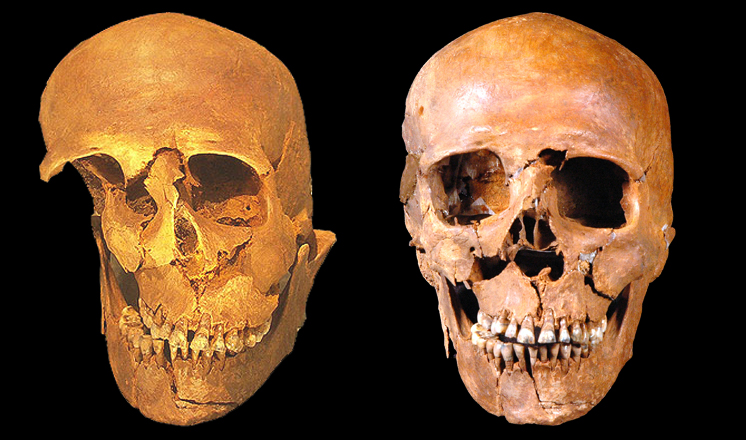A Bronze Age face revealed
RSS FeedMuseum objects undergo conservation assessments on a regular basis – to ensure that they are not deteriorating and that their packaging or display mounts are still adequately protecting them. This is why you’ll occasionally see a gap in a display with a little card apologising for the object being missing. However, one object that has recently been removed from the museum’s archaeology gallery has been undergoing a rather more intensive process.
The object in question is a human skull, excavated from a barrow (a burial mound) at Walcott Common near Billinghay in 1988. The barrow is Bronze Age in date (c.2,200 - 800BC) and the adult male skeleton found buried inside is an important piece of evidence about our ancestors.
When excavated, the skull was found to have been damaged as the weight of earth on top of it had crushed the right side of the skull, deforming the face. Because of the fragile nature of the bones, the skull was consolidated with the soil still inside to avoid it collapsing. It was in this soil-filled condition that it went on display in the museum’s archaeology gallery in 2005.
While the skull has been off display our conservators have been working to remove the soil and rebuild the dislodged bones, allowing us to take our first proper look at the face of this Bronze Age Lincolnshire resident.

The difference in the face is clear to see in these 'before and during' images, and the once-squashed features are now strikingly human. Seeing the face for the first time raised an interesting question – did the person have a facial disfigurement? You can see from the image that the reconstructed face isn’t symmetrical – the eye sockets aren’t level and the nose isn’t even. After consulting with a bone specialist though, we’ve learned that this is due to the weight of the soil deforming bones rather than something the person would have suffered from in life.
Look out for the skull going back on display in the archaeological gallery soon when the final rebuilding is completed. We’ll also be taking a more detailed look at the process of conserving and rebuilding the skull on our Lincs to the Past website in the near future.
Comments
Thank you for the excellent article. Hope to visit when the skull is back in display!
Lorraine Rardin
